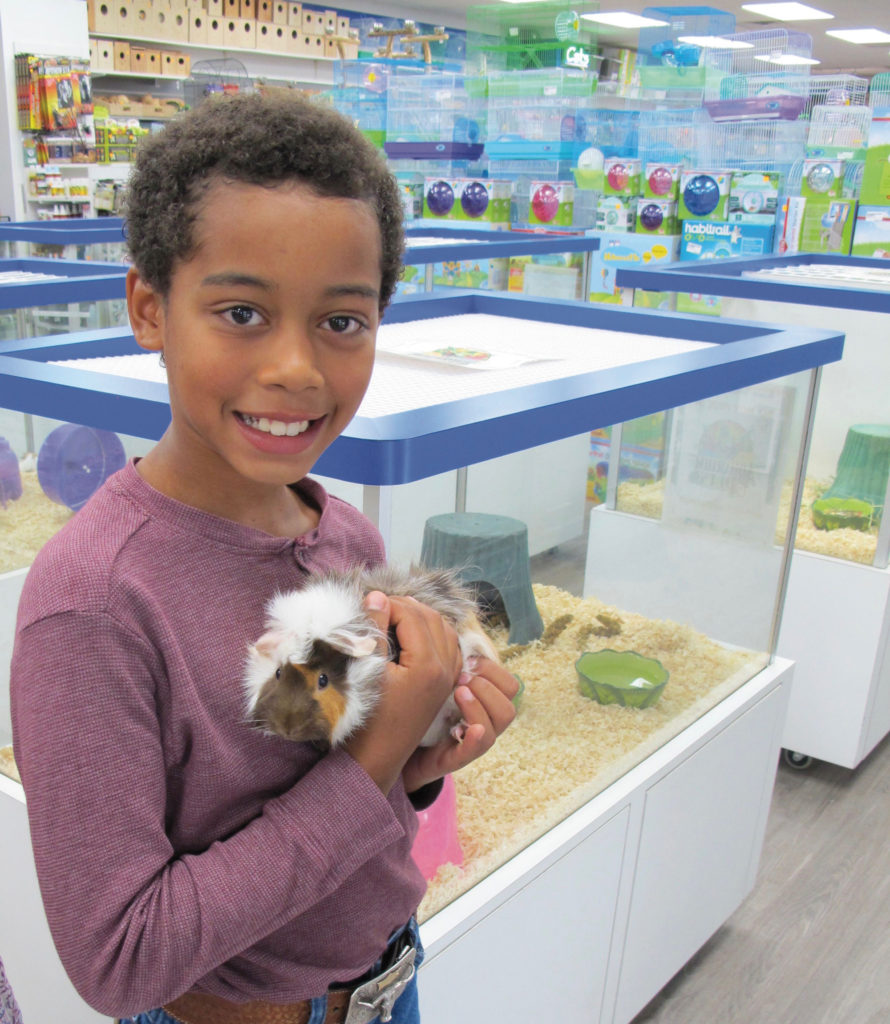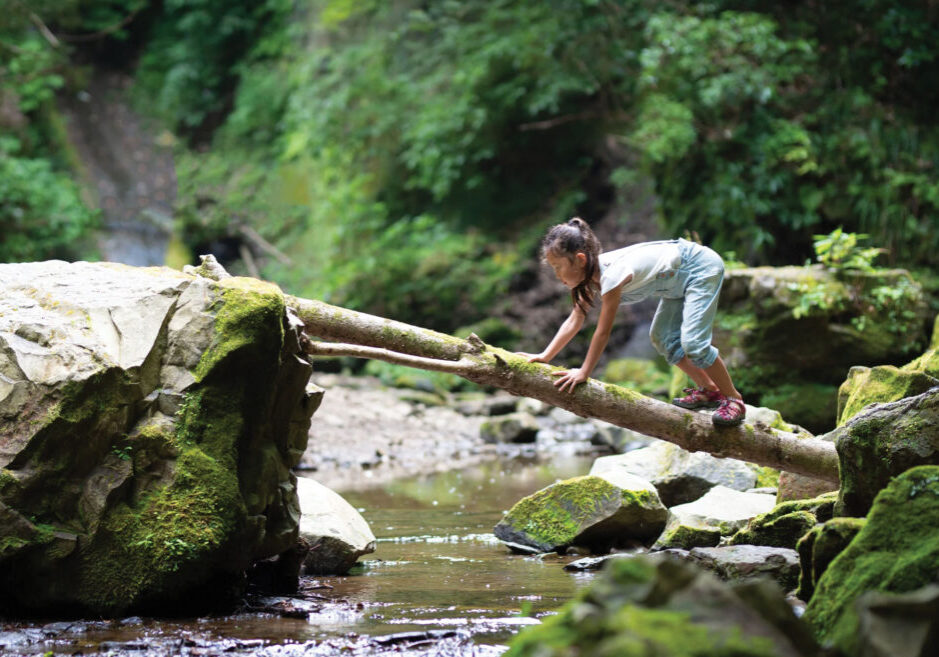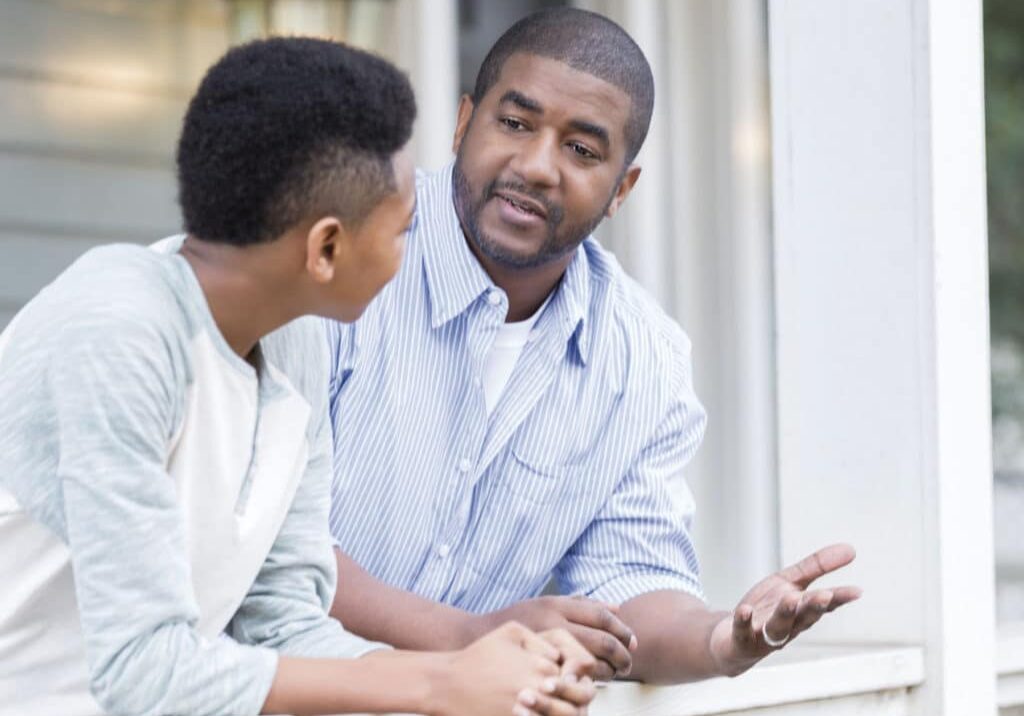

Smaller pets such as guinea pigs and rabbits can be ideal first animals because they’re cute, generally sweet-natured and relatively low-maintenance in comparison to, say, a puppy who requires vaccinations, toilet training and walking several times a day. With patience, time and careful handling, most guinea pigs and rabbits can learn to sit contentedly in a child’s lap and enjoy being stroked.
Pet ownership also provides the perfect opportunity for your child to learn about responsibilities, kindness and compassion – and that’s where you come in. Giving your mini Doctor Doolittle some regular tasks such as feeding, grooming and playing with their small pet also helps reinforce the importance of routine.
In the process, remember that small pets tend to be nervous, skittish little souls. They also have delicate bones and can be easily injured. For this reason, they need gentle treatment with lots of TLC in order to thrive. If your small pet is not treated carefully by you or your child, the results could be devastating for everyone.
It’s also important to know that both guinea pigs and rabbits prefer to live with a companion so you should always try to adopt two animals rather than one to avoid them getting lonely. Also, as animals living indoors will see you – their human family – as their companions, it’s important to build a healthy bond.
Considering adding a small pet to your household? Check out these important tips first:
Always supervise young children with your pet
Under fives should never be left unsupervised with your guinea pigs or rabbits. They simply won’t understand the full consequences of rough handling and may end up hurting the animal or themselves. Instead, this age group can learn by observing you with your pet as well as “helping” at feeding time by offering fresh vegetables. They could also gently stroke your guinea pig or rabbit when they’re being held by you.
As a parent, you know your child best. Depending on their capabilities and level of maturity, your older child may be able to take a more active role in caring for their pet. They may be able to hold your guinea pig or rabbit independently but, again, they must always be supervised to avoid accidents.
Kindness rules
Lay out ‘kindness rules’ which your child must follow to minimize the risk of your small animal being hurt or distressed. These may include: not grabbing your guinea pig from the cage, waking them unexpectedly or being heavy handed. If necessary, write these rules on paper and hang it beside the cage as a reminder. Reiterate the rules at feeding and play time and make sure your child understands them fully.
Quiet, please!
On the whole, kids are boisterous – especially when they’re excited. But try to encourage your child to be calm and quiet around your guinea pigs or other small animals, rather than shouting and stomping around. Explain that loud unexpected noises can frighten a rabbit or guinea pig and cause them to hide, which is the last thing you want at feeding and play time!.
Feeding time – have your child check with you first
Teach your child never to feed your guinea pig or small pet something without checking with you first. A fresh batch of Vitamin C rich dandelions from the garden is a lovely treat. But if your child mistakenly adds daffodil petals to the mix, the results could be disastrous as these are poisonous to guinea pigs and rabbits.
Have your child help with the routine
It’s important to keep your pets’ cage clean. If you choose to use fleece liners for your guinea pigs, you’ll need to do several spot cleans each day to remove poop and soiled hay. It’s understandable if you decide against having your child help you clean out the cage, especially if they’re younger. However, they can still help with less messy parts of the routine. These can include refilling water bottles and bowls, putting fresh pellets in bowls and replenishing hay.
Ask your child to help with choosing names
Don’t forget the fun stuff such as choosing names for the newest member of your family. By helping to suggest name options, your child will feel involved right from the start. Also, kids have the best imaginations when it comes to thinking up sparky, fabulous names.
Ask your child to help choose toys and treats
Ask your child to help you choose your pet’s new home so that they feel totally involved in the process of preparing for their arrival. Your child could also help choose a fun fleece liner, toys and accessories and some pet safe edible treats too.
Ask your child to help with play time
They may not need walking like a dog but guinea pigs and rabbits still need daily time outside their cage for exercise and enrichment. Ask your child to help you set up indoor floor time by placing fleece liners on an easily washable floor in your home, along with some toys. Then sit quietly together and watch your furry friend at play. Combine floor time with feeding time, asking your child to offer lettuce leaves and carrot slices. This will boost the bond between them and their little pal. In warmer months, set up an outdoor playpen in your garden so your child can watch your piggy or rabbit at play.
Posted in: Youth & Teen
Comment Policy: All viewpoints are welcome, but comments should remain relevant. Personal attacks, profanity, and aggressive behavior are not allowed. No spam, advertising, or promoting of products/services. Please, only use your real name and limit the amount of links submitted in your comment.
You Might Also Like...

Who Knew My Teen Pulling Away Would Hurt My Heart This Much
I heard parents with older kids talk about it. I listened to my older sister vent about how much she missed her kids even though they slept right down the […]

Why Kids Need Risky Play to Thrive
When my youngest daughter learned to ride her bike last summer, my husband and I promptly snapped a photo to document the milestone. In the picture, our daughter looks triumphant, her feet resting comfortably […]

Help Kids Explore Their Passions With A Summer Writing Project
Does your child have a particular passion that could be explored more through writing or photography? Blogging is an educational way for kids to practice their writing and research skills […]

A Mother’s Journey: Teenage Depression
As a mother it is hard not to feel guilty when you realize your child is suffering. I remember wishing my first baby had come with a care manual, but between […]


Guinea pigs, small and adorable rodents originating from South America, make delightful and endearing pets. With their soft fur, expressive squeaks, and gentle nature, they captivate the hearts of both children and adults. Guinea pigs are social animals that thrive on companionship and enjoy being gently stroked or cuddled. Their low maintenance requirements, including a simple diet and a relatively small living space, make them ideal pets for individuals or families seeking the joy of pet ownership without overwhelming responsibilities.